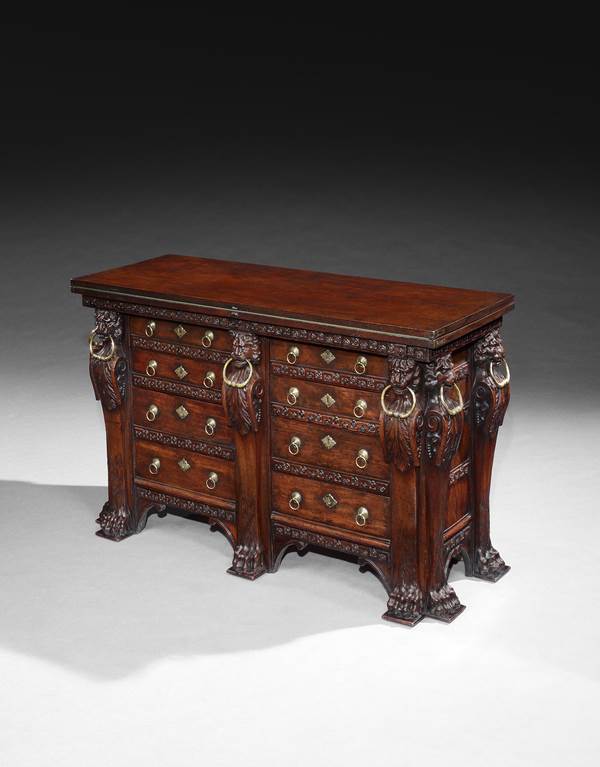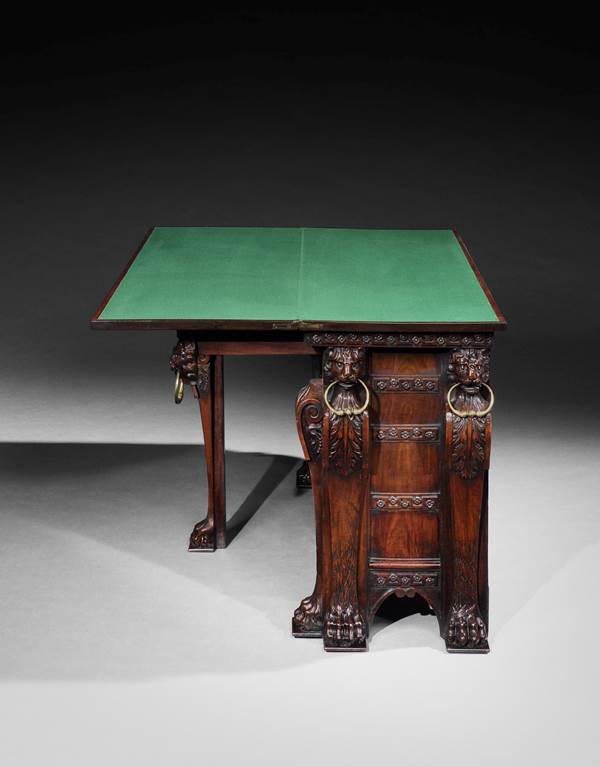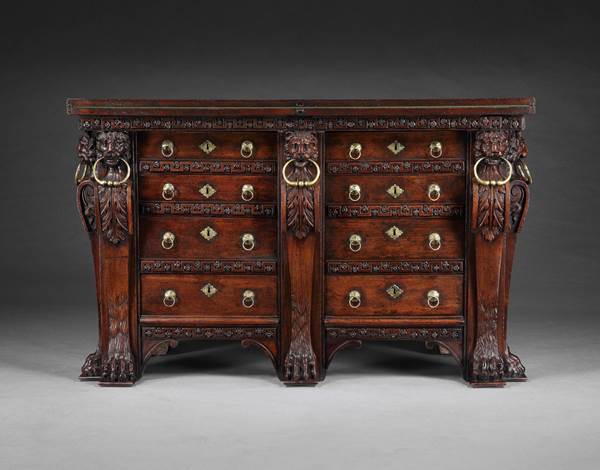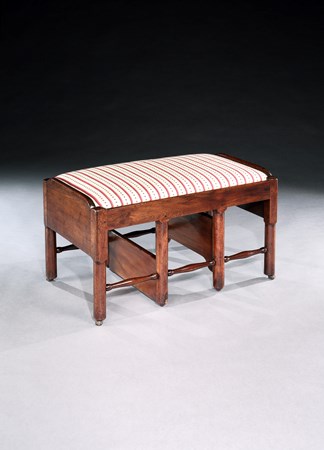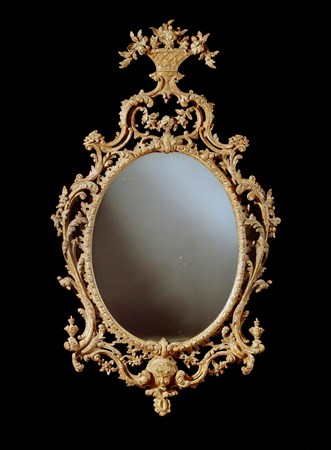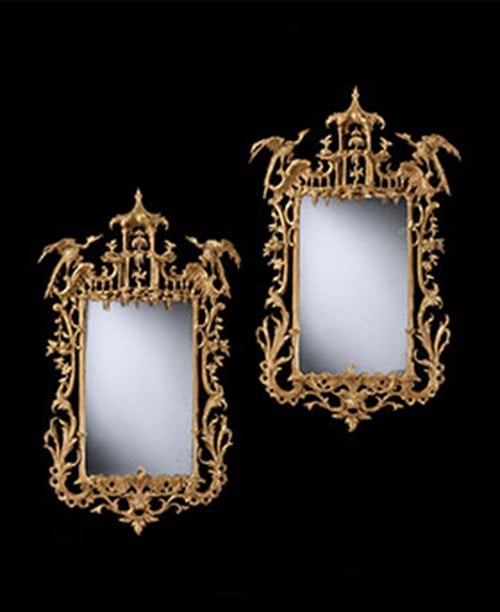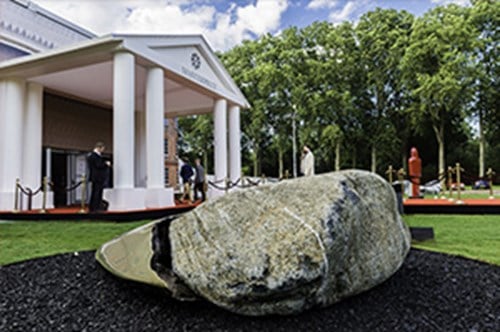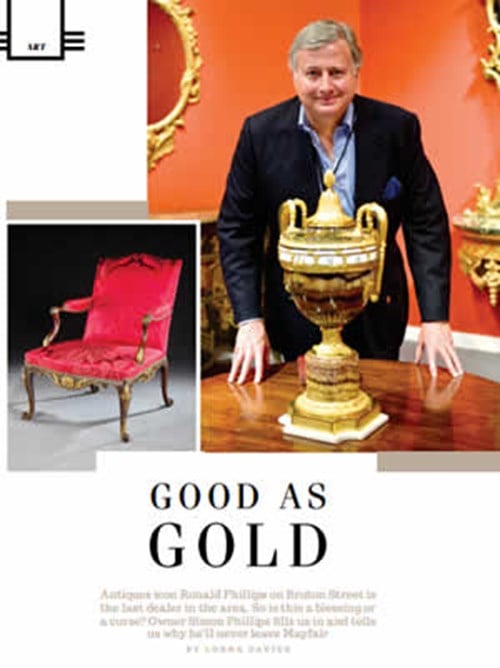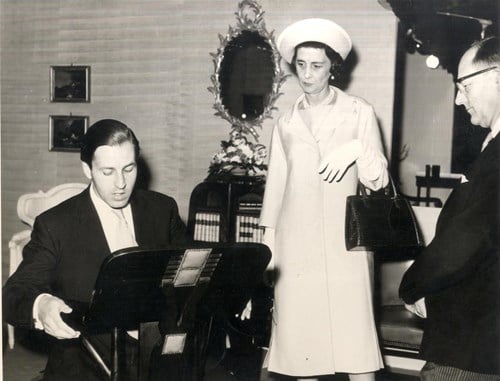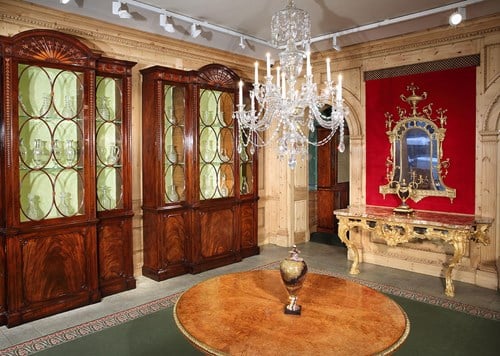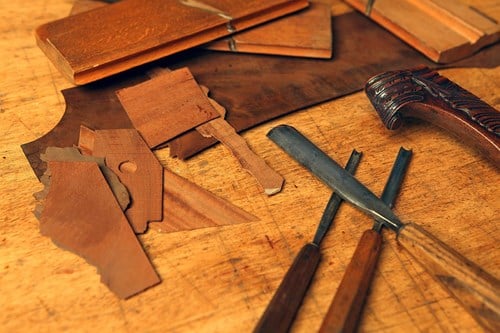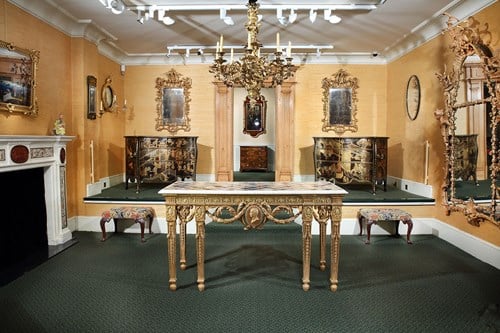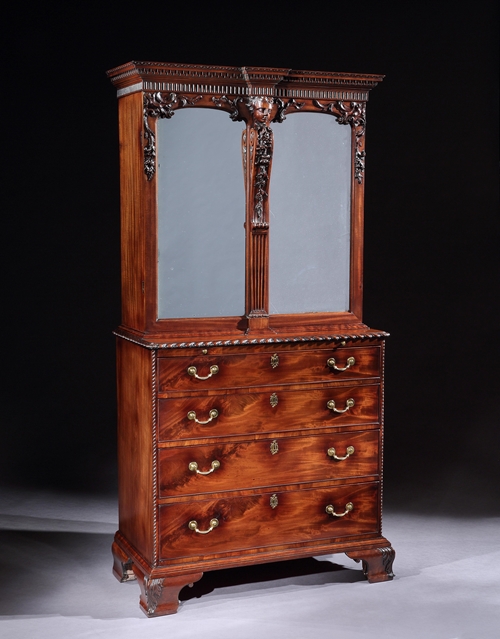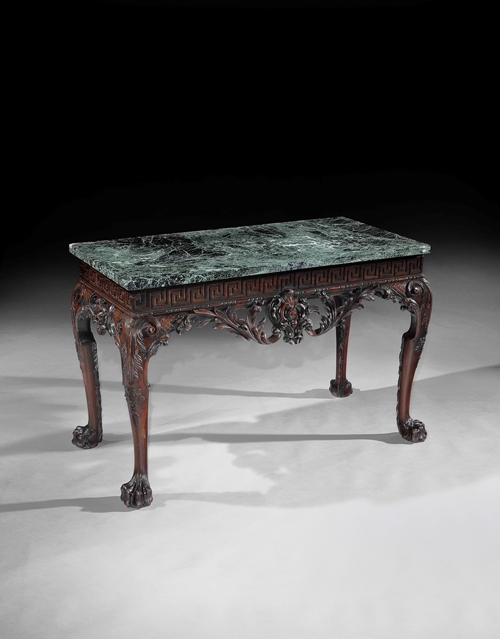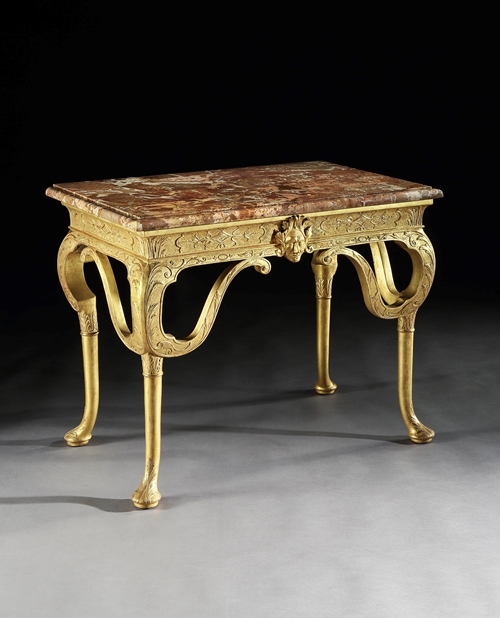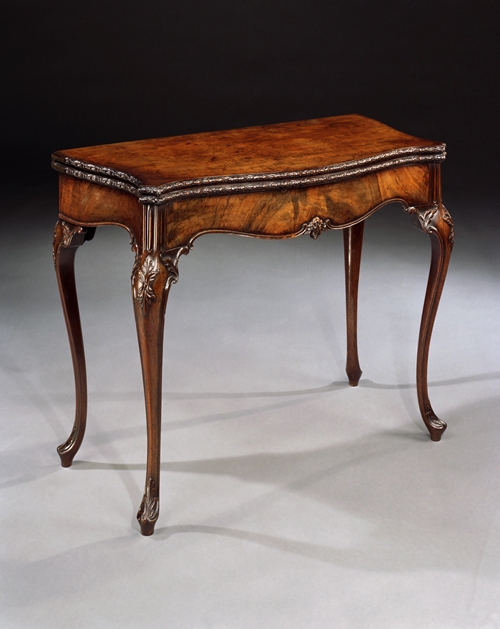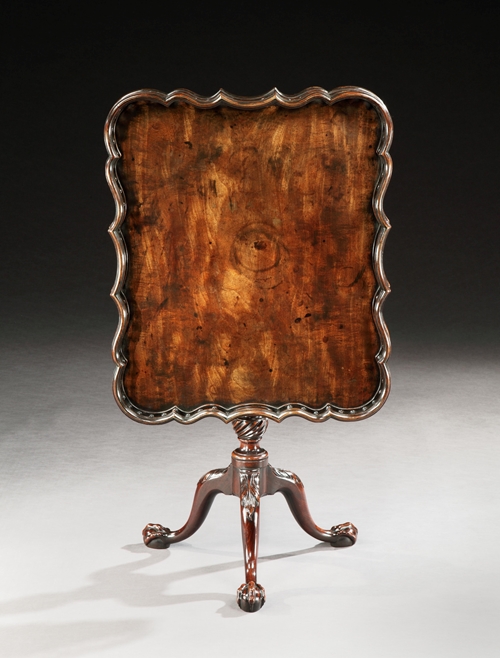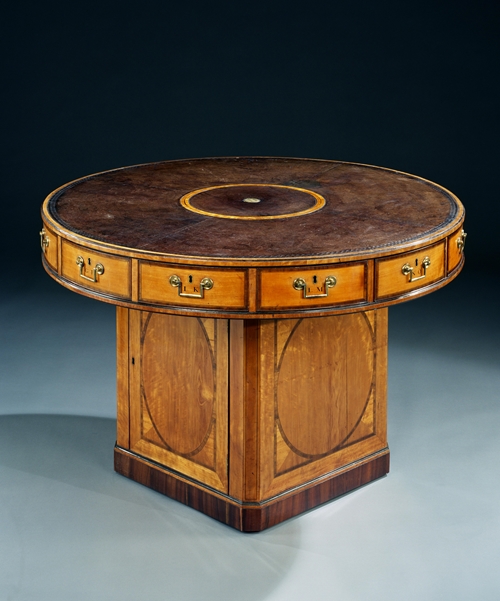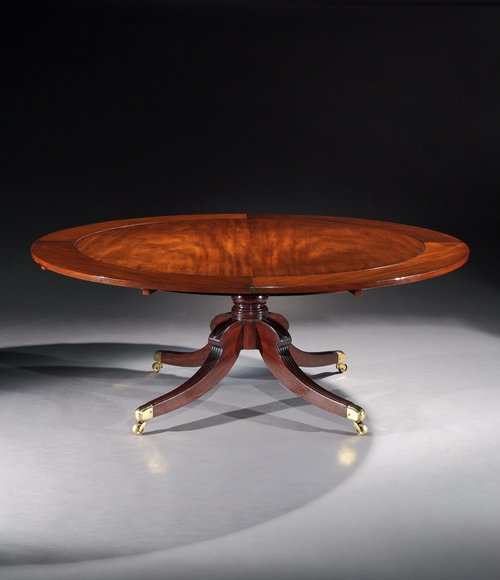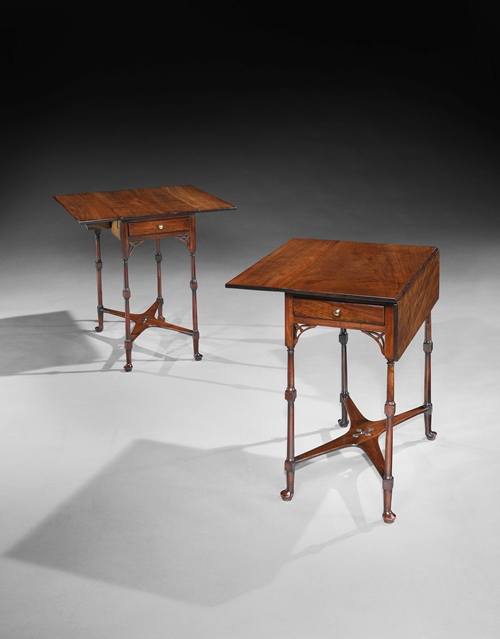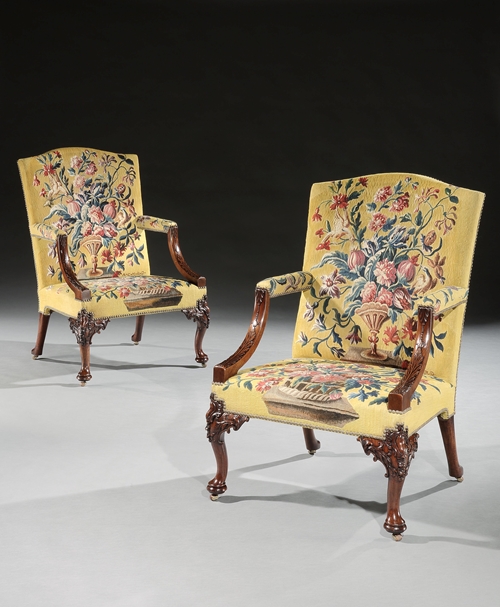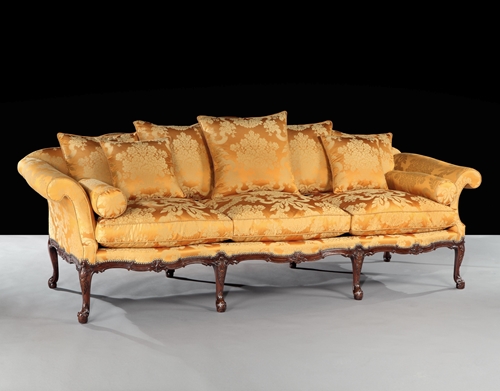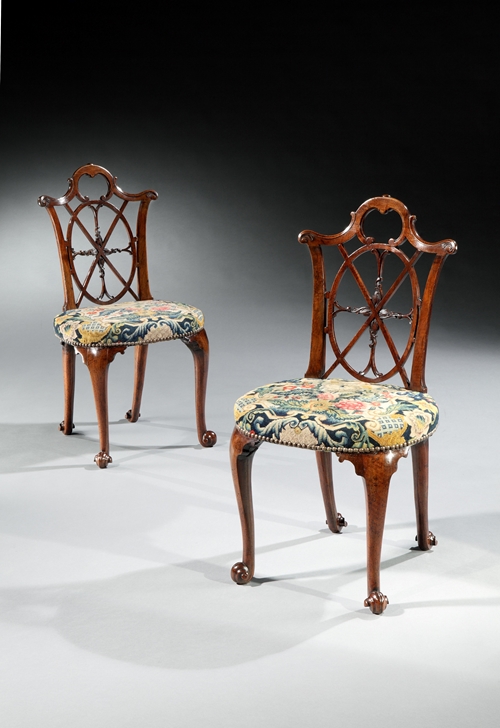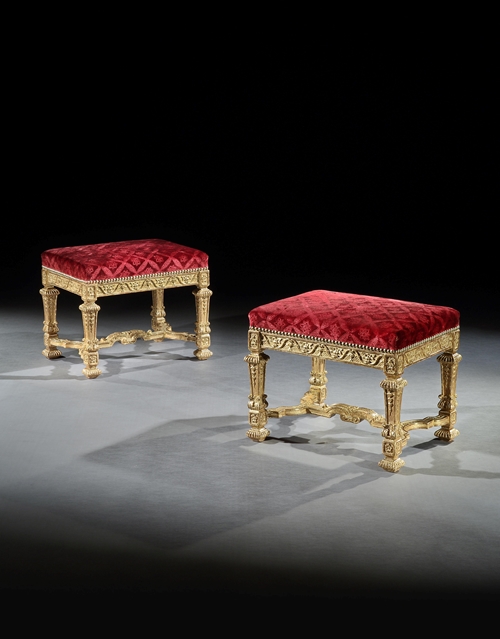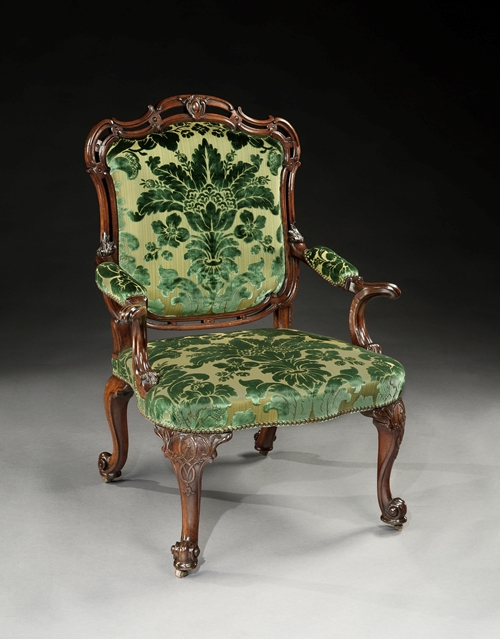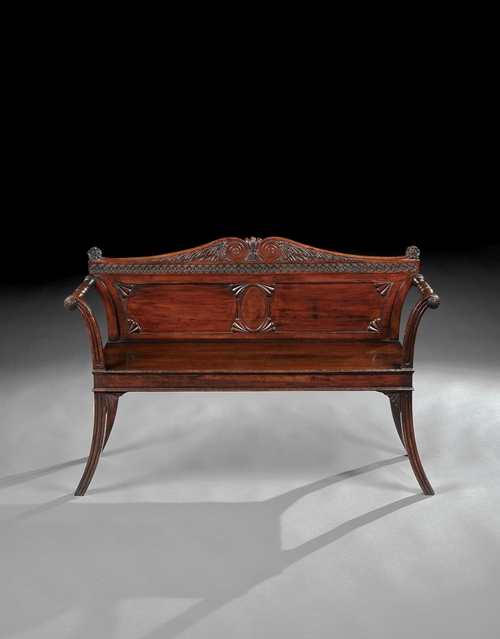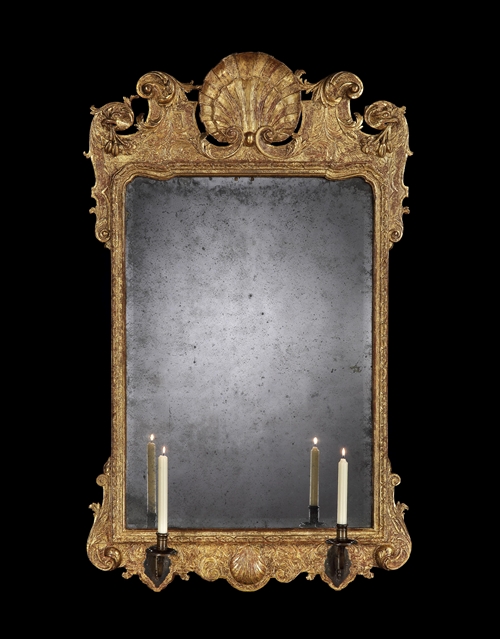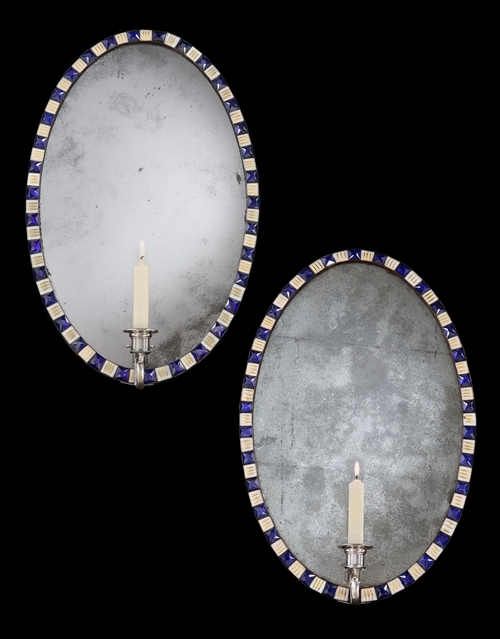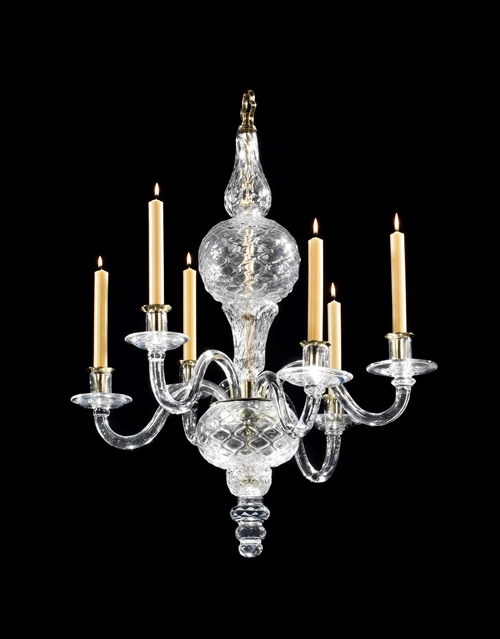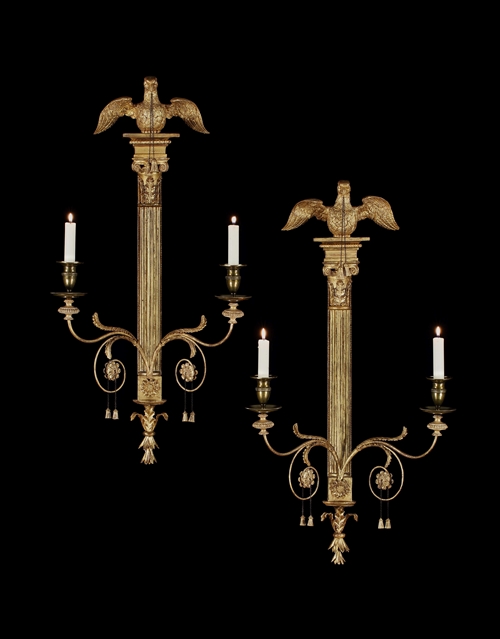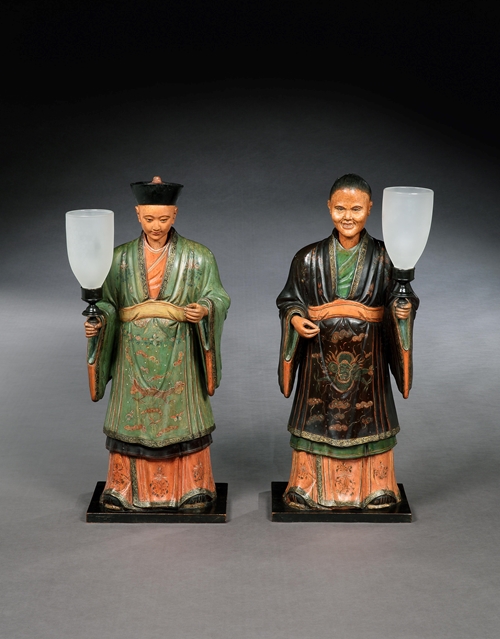A George II mahogany commode chest in the manner of William Kent.
Note: The brass ring handles and escutcheons are of later date. The top section of the fold-over top and the first row of drawers were replaced following bomb damage in 1944.
The commode belongs to a group of very similar pieces, all but one sharing the feature of trusses with carved heads and feet, mostly in the form of lions, but some with the heads of children. These trusses are generally pull-out supports for the fold-over tops if the piece is straight-fronted. Other examples, like the well documented library table for Lord Burlington at Chiswick House, London, are of polygonal shape and come in two halves which, when separated, can be pushed against the wall. Most if not all of them were probably originally intended for use in a library.
Our commode is of special interest because it can be traced back down the female line in the family of the previous owners to William Pitt, 1st Earl of Chatham. Pitt held the post of Groom of the Bedchamber to Frederick, Prince of Wales, and was later appointed Vice Treasurer of Ireland and then Paymaster General of His Majesty’s Forces. He was the British prime minister from 1766 to 1768.
The Prince of Wales was estranged from his father, George II, and he set up an alternative Court in opposition to the King at his London residence, Leicester House. The Prince engaged both William Vile and his successor Benjamin Goodison to refurbish the apartments there.
A commode similar to the Chatham chest was exhibited at the 1929 English Decorative Art exhibition at Lansdowne House, London. The lender, a Mrs. Marlowe, has sadly not been identified. The Marlowe commode’s only difference is that it does not have trusses on the side. A three-bay commode, otherwise identical to the Chatham chest, was formerly in the celebrated Sonnenberg collection in New York. It and the Chatham chest could have been part of a suite, perhaps furnishing a large library such as the Queen’s Library, formerly at St. James’s Palace, London. The library was built for Queen Caroline between 1736 and 1737 but demolished in 1825, and little trace of it survives today apart from a watercolour painting by Charles Wild, preserved in the Royal Collection. In its foreground is a writing table with near identical monopodia truss supports, and it would be plausible if our commode and the Sonnenberg commode once formed part of the furnishings of Queen Caroline’s library. After her death the library fell into disuse, and it was recorded in the late 1790s as a lumber room. In Wild’s watercolour it is just possible to see a piece of furniture behind the library table in the foreground and in front of the fireplace at the back of the room. The piece appears to have a fold-over top, and one can clearly see a drawer arrangement with two handles to each drawer. Unfortunately the image is too soft to confirm any more, but it is possible that the chest depicted there is in fact this example.
Pitt’s close connections to the Royal Household and to the Prince of Wales in particular are important. It is highly possible that the commode was a perquisite of Pitt’s position at Court.
Literature:
‘English Decorative Art at Lansdowne House’, exhibition catalogue, London, 1929, exhibit 402, pl. LXXXVI; lent by Mrs. Marlowe.
E. F. Strange (ed.), Old Furniture, vol. VI, January–April 1929, p. 192, fig. 8.
‘Art Treasure Exhibition’, exhibition catalogue, New York, 1967, exhibit 240.
David Watkin, The Royal Interiors of Regency England, 1984, p. 56.
-
Provenance
William Pitt, 1st Earl of Chatham;
Harriet Eliot (née Pitt);
Harriot Hester Pringle (née Eliot);
Sir John Henry Pringle;
Edward Reginald Pringle, Ayton Castle, Scotland;
Alix Blanche Hester Harrison (née Pringle);
Major Reginald Frederick Pitt Harrison;
Private collection, New York, USA.
Looking for something similar? YOU MAY ALSO LIKE
YOU HAVE RECENTLY VIEWED ITEMS
Make an enquiry
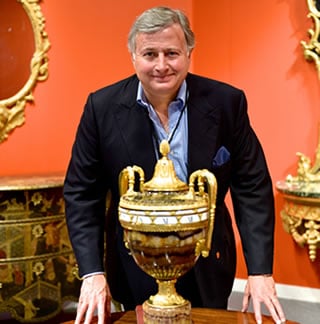
- CAN WE HELP YOU?
- +44 (0)20 7493 2341
- [email protected]
